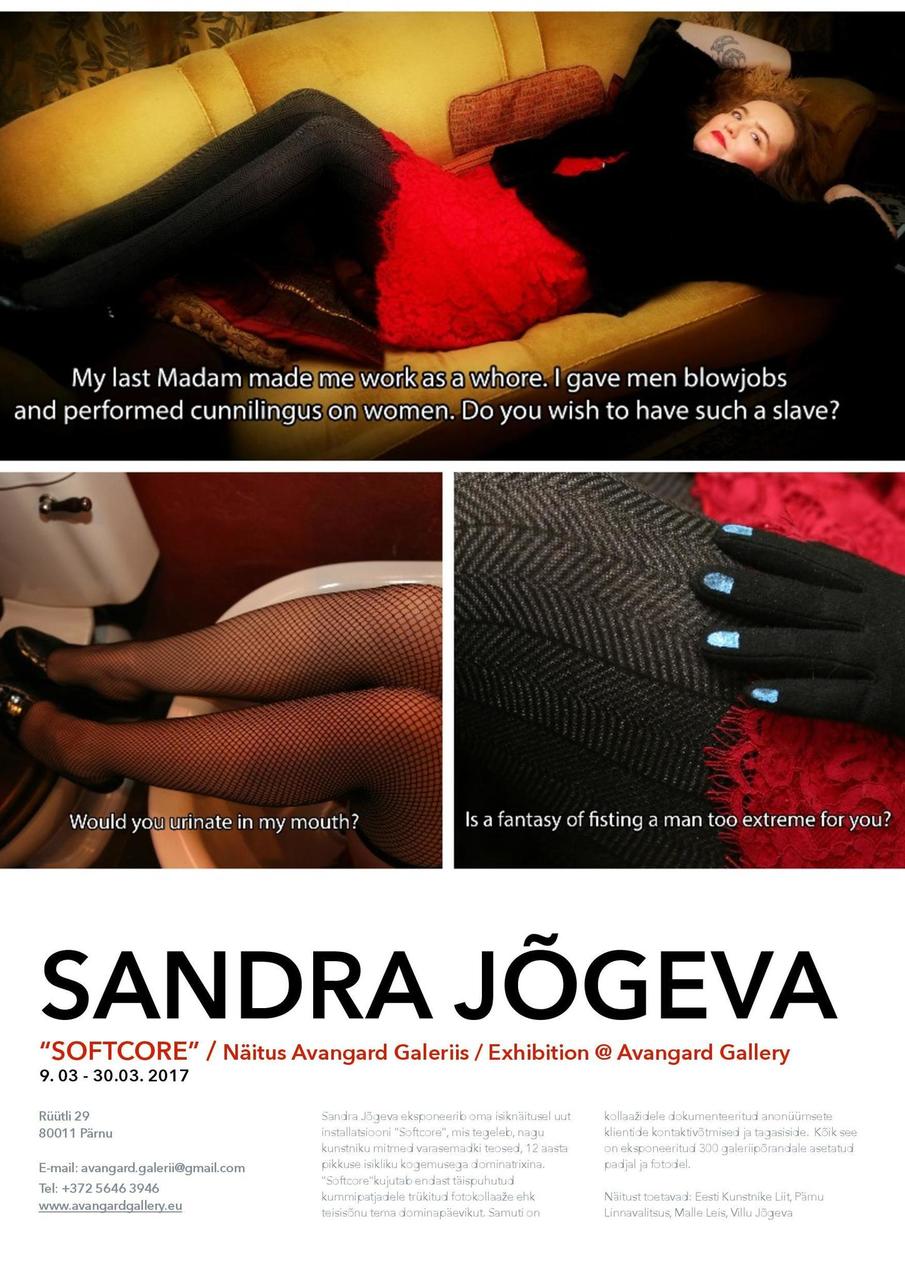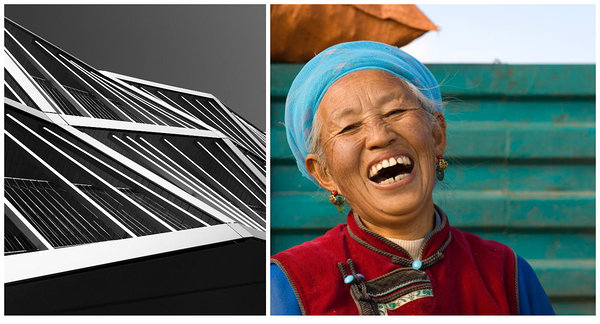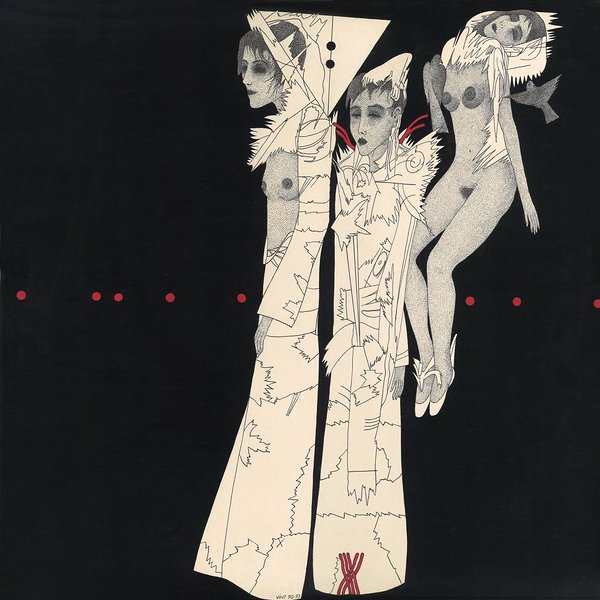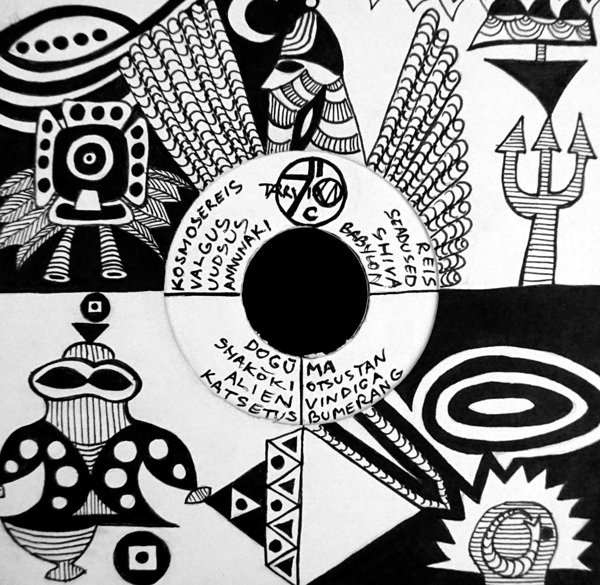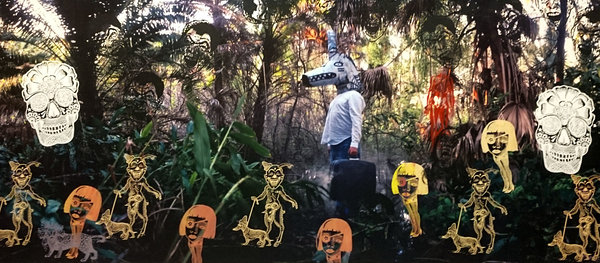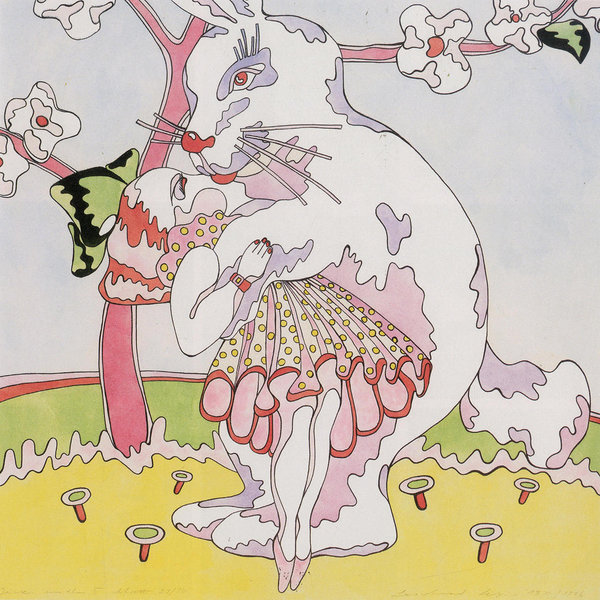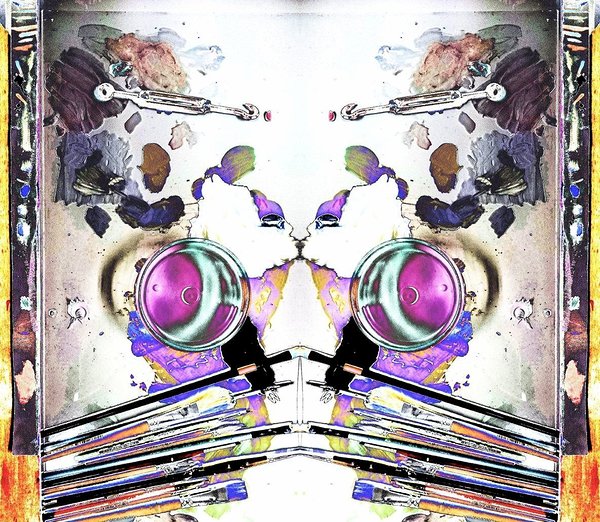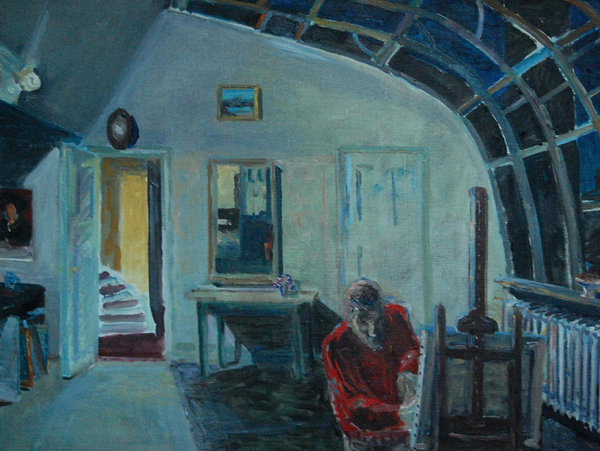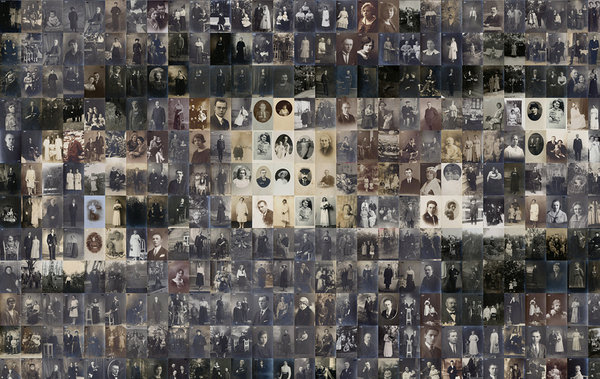Pop and Psychedelia in Estonian printmaking. Avangard Summer Gallery (Supeluse 1, Pärnu), 30.05-31.08.2025
Participating artists: Marko Mäetamm, Kalev Mark Kostabi, Enno Hallek, Evi Tihemets, Illimar Paul, Leonhard Lapin
While Western pop art emerged in the 1950s–1960s alongside economic prosperity and served as a kind of commentary on all-encompassing consumer culture, the context here, in which the birth of local pop art can be viewed, was something entirely different. Much speculation has revolved around whether our burst of pop art was an imitation of Western art or rather a local phenomenon that bore signs characteristic of pop.
Warhol and Lichtenstein could draw inspiration from advertising, media, comics, and commerce and reflect the spirit of their time, but many remember the Soviet period as a time of great scarcity, where talk of a consumer boom was certainly out of the question. However, putting aside the material world, artists in the Soviet Union’s most Western and liberal border republic were not completely isolated from the rest of the world. Magazines acquired from across the border circulated hand-to-hand, Western music and literature were consumed, and in 1969 Lapin brought back from abroad a book by Lucy Lippard on pop art, which undoubtedly influenced the work of many of his contemporaries. Lapin has indeed been considered one of the promoters and introducers of pop art in Estonia – the legendary
SOUP69 created together with ERKI design and architecture students, was inspired by modern Western art, and the appearance of Warhol’s iconic soup can on the famous SOUP69 exhibition poster was no coincidence.
At the same time, a massive experimental shift occurred in local graphic art. A new generation began mixing different techniques (etching, lithography, intaglio, silkscreen, etc.) and colors to achieve more layered works and move away from the earlier black-and-white graphics, which mostly depicted landscapes or everyday scenes. The earlier realistic style was boldly replaced by abstract explorations of form, and the evolving possibilities of graphic art were well reflected in the art of the 1960s–70s, represented in the exhibition by Leonhard Lapin, Evi Tihemets, and Illimar Paul. In the graphics of that era, one can find many references to pop and the psychedelic nature of the hippie era – bold play with colors and experimentation. While the art of the time could be visually colorful and cheerful, at times even naïve, the content of the works could sometimes conceal political undertones and darker themes. It should not be forgotten that not all Estonian art was created on Estonian soil – from this period, we must also mention Enno Hallek, considered the father of Swedish pop art, an expatriate Estonian artist who, amidst the great wave of refugees and the turmoil of war, fled with his family to Sweden as a young boy.
The exhibition also features the second wave of pop art, represented by Marko Mäetamm and Kalev Mark Kostabi. Mäetamm’s graphics from the 1990s reflect, on one hand, that once-unattainable and longed-for consumer world with its vices and joys. On the other hand, Mäetamm’s graphic works refer to the hippie movement, which opposed pop culture and sought to distance itself from the material world. In our context, pop and hippie psychedelia merged into a single whole, symbolizing freedom and a long-desired world without borders. References to pop art can also be found in Kalev Mark Kostabi’s graphics, where one can see quotes from both the artist’s own work from the 1990s and one of pop art’s most iconic figures, Roy Lichtenstein.
The exhibition is supported by the Estonian Cultural Endowment and the Pärnu City Government.
The Aesthetics of the Void. AVANGARD SUMMER GALLERY, (Supeluse 1, Pärnu)
The exhibition discovers minimalist art in Estonian printmaking from 1960s to 1990s. The artists of that generation were the ones who's aim was to modernize art after a period of social realism and severe style that were dominating the art scene during the 1950s to 1960s. The switch from realism to abstract art and minimalism were interesting phenomenon of the context of the whole Soviet society. Artists working in the field of printmaking were influenced not only by Western minimalism, but also by earlier movements like De Stjil, Bauhaus, Russian Constructivism and even zen buddhism.
SURREALISM 100: Surrealistic manifestations in the graphic art of Estonia during the 1960s to 1980s. AVANGARD SUMMER GALLERY, 12.06-21.07.2024 (Supeluse 1, Pärnu)
The exhibition marks the centenary of one of the most exciting art movements of the last century - surrealism - and brings to the viewer the works of six Estonian art classics, which can be directly or indirectly associated with surrealism. The 1960s can be considered the second wave of surrealism in world art, and the art here, led by printmakers, was strongly influenced by surrealism in this and the following decades. During that period many authors were influenced by surrealist art and literature. Subconscious and inner feelings became often recurring themes in the works of this era.
"WOMAN&WOMAN: The art of Survival” at the Small Hall of the Tartu Art House, 12-04-19.05.2024 as part of TARTU2024 - Europe Culture capital 2024 programme
Woman&Woman introduces the work of five female artists that, either directly or indirectly deal with various strategies for surviving as a woman. In primitive societies, the wrong gender can be a matter of life and death. Jill Peters, an American photojournalist, documents the sworn virgins of Albania. The "sworn virgins" are concept a dating back hundreds of years that refers to biological women living in Balkan villages who have decided at an early age to assume the social identities of men for the rest of their lives. Families with no male members or male heirs are without any rights, as women do not have the right to work. One way to save her family and help it survive was for a woman to take on the role of a man, and this provides the basis for the "burnesha" or sworn virgins tradition. When a woman assumed the status of a man, it gave her all the rights and privileges of the male population.
Lilia Li Mi Yan, a photo artist from Turkmenistan, deals with aging in the photo series called Mature Beauty. Li Mi Yan looks at how middle-aged women feel about their bodies and to what extent they feel beautiful, desirable, and sexual. In her environmentally friendly installation, Sandra Jõgeva also discusses the interrelationships of sexuality, pleasure and happiness. Jõgeva has created an interactive installation by reusing the sex dolls left over from the yoni-massage classes of Epp Kärsin, the most famous Estonian pleasure-educator. By familiarising oneself with it more closely, one can receive a personal message on how to make happiness blossom in their life.
Valeria Vavoom, an Italian artist based in Berlin, analyses the ideals related to the age of social media. The digital art materialised for the exhibition interprets Instagram trends and norms through hyper-characterised characters who struggle with the ambitions and fears of our time.
Mare Tralla’s fragment from the installation titled We Have More Chickens to Pluck is the documentation and mental continuation of the artist's performance of the same name in the South London Gallery (2018). The work, which plays with repressive words, points to the need to keep speaking out about issues of gender and power, and to continue the struggle for equality and power.
Curator: Marian Grau
"MAN&MAN: The Art of Survival" at the Monumental Gallery of the Tartu Art House, 12-04-19.05.2024
Man&Man and Woman&Woman, which have been in dialogue with Pärnu's legendary exhibition of nudes called Man&Woman for five years, have during this time tried to deal with the positions of men and women in modern society, and do so without the limitations of nudes as a genre. The sixth editions of Man&Man and Woman&Woman draw inspiration from the artistic concept of Tartu 2024, i.e. the Arts of Survival and examines how to remain yourself as a man or woman in a world saturated with clichés and stereotypes.
Man&Man seeks to expand the conventional understanding of masculinity, by deconstructing history as well as defining the modern man. Spanish artist Naro Pinosa mixes familiar portraits from the canons of art history with modern “ideals of beauty” and raises questions about the changing values of masculinity. In Spain, performer and musician Alvaro Sola has set out to reform flamenco and copla, in which strict gender roles have applied. Ivan Dumont's photographs of Alvaro Sola document the effort to raise questions about equality and to modernise both the visuals and music of flamenco.
New York-based artist David Williams approaches masculinity through the discriminatory term “cat lady” and portrays cat uncles, i.e. men who do not consider the great love of cats to be an unmanly quality. Arne Svenson, also from New York, examines the visual characteristics that distinguish straight men from homosexuals. On the other hand, Valdek Laur seeks to determine what masculinity is and what all the males who don't fit the ideal of masculinity should do?
Curator: Jan Leo Grau
Pärnu XXII Art Summer: MAN&MAN: 21st Century Archetypes in the Pärnu Artists House + WOMAN&WOMAN: Fragments of the Works of Female Artists from the Soviet Period in the Pärnu Town Hall 21 June to 22 July 2023
MAN&MAN: 21st Century Archetypes
Participating artists: Alvaro Sola & Ivan Dumont, Naro Pinosa, Nihil & Leoncio Harmr, Peeter Allik, Valdek Laur
Curator: Jan Leo Grau
The Spanish collage artist Naro Pinosa works mostly in the field of digital art. His Instagram feed, where he generates his virtual works, which have been cast into material form for this exhibition, has attracted a great deal of attention. In Pinosa’s works, familiar portraits of men from the canons of art history are combined, and have been exchanged for modern “ideals of beauty,” thereby raising questions about changing masculine values.
Similarly, Alvaro Sola, a performer and musician from Spain, has also set out to reform flamenco, which has had strict gender roles, i.e. the women dance and sing while the men usually play the instruments. Ivan Dumont’s photographs of Alvaro Sola document the effort to raise questions of equality and to modernise flamenco through visuals as well as music.
Nihil & Leoncio Harmr reveal the darker sides of masculinity and discuss the male subconscious and archetypes related to masculinity. Peeter Allik’s works, which express primal domestic macho power by using his characteristic irony, enter into a dialogue with the aforementioned, as well as with The Cosmetics of Masculinity, Valdek Lauri’s Estonian Academy of Arts thesis, which deals with masculinity as a cosmetic caricature, something it has unfortunately become in the modern world. Valdek Laur investigates what masculinity is and what all the males who do not meet this ideal of masculinity should do.
WOMAN&WOMAN: Fragments from the Works of Female Artists from the Soviet Period
Participating artists: Aime Kuulbusch, Malle Leis, Silvi Liiva, Kaisa Puustak, Evi Tihemets, Aili Vint, Mare Vint, Marje Üksine
Curator: Marian Grau
The post-Stalinist decades of the Estonian art scene can be seen, on the one hand, as an era of prohibitions and demands, on the other, as one of the most important and revolutionary times for the renewal of artistic idioms. The exhibition mainly focuses on the 1970s and 1980s, when the local cultural world has been interpreted as a more liberal and free-spirited “Soviet West”. The proportion of female artists at that time was remarkably high, and therefore, it is difficult to underestimate their contribution to the changing art discourses.
During those decades, all the visual arts were renewed, and the realism-oriented rules related to painting, graphics and sculpture were reoriented. Although the artists participating in the exhibition were educated during the occupation, their works speak a language that differs completely from the official art dictated by Moscow.
Various graphic techniques were mixed and colours, as well as freer and more expressive lines, were added to the previously gloomy monochromatic world. In painting, the joyful enthusiasm of the hippie era was mixed with the modern techniques that leaked in from the West, i.e. more abstract painting styles were experimented with, and previous understandings of composition were given entirely new meanings.
The exhibition can also be seen as an attempt to focus on these forgotten decades, and along with pearls that are established classics, one can (re)discover several works that have yet to be introduced to the public at large. Among the creations by Mare Vint (nee Mänd) from the late 1960s, one can find, for example, psychedelic paintings, which are one of the most exciting and exceptional series by an artist who later went down in history as a graphic artist. These are complemented by early prints from the 1970s, which depict elements that are characteristic of closed systems, i.e. walls, gardens, fences. Malle Leis’s early collages, watercolours and serigraphs depict urban and natural landscapes, as well as people and objects, in a Pop style. Somewhat unexpectedly, one can also find political references in Leis’s early work. Evi Tihemets’ work is represented by both her more melancholic and harsher style, as well as her happier and more Pop style, which went hand in hand throughout the decades. As a very versatile artist, Tihemets could create abstract colour lithographs, drawing inspiration from the world of fantasy and literature, while also reflecting the desolate industrial landscapes of East-Viru County.
Many of Kaisa Puustak’s prints also feature industrial and urban scenes that play with geometry, in which a realistic approach has acquired an experimental and freer expression. Marje Üksine also created bold series prints in the 1970s, in which various techniques are mixed and we can see the movement of graphic art toward more abstract forms.
Silvi Liiva’s work from the 1970s focuses on people and their inner worlds and her early work is often associated with the unravelling of the subconscious and people’s deep emotional layers.
Another eloquent sign of the era are the female nudes by Aili Vint, which are stylised almost to the point of abstraction, and the ones by Aime Kuulbusch that resemble sculptural forms. After the harsh Stalinist period, nudes as a genre could be found in the art galleries again. However, they still had to be hidden from the eyes of Moscow during subsequent decades.
Pärnu XXI Art Summer: Woman&Woman in the Pärnu City Gallery in the Artists’ House (Nikolai 27) and Man&Man in the Pärnu City Gallery in the City Hall (Uus 4), 25 June -23 July 2022
The Pärnu Art Summer is a festival with long traditions. The first Art Summer took place in 1995, and throughout this long period, most of the great figures of the Estonian art world have participated in the event. Three years ago, two new, and more international, exhibition series called Woman & Woman and Man & Man were born under the auspices of the Art Summer. The idea of curators Marian and Jan Leo Grau was to introduce an exhibition format to accompany the body and beach rituals and nude culture of the resort town that would present different points of view regarding gender issues. Woman & Woman and Man & Man are not traditional exhibitions of nudes – the artists selected for the exhibition reveal their interpretations of gender identity, and try to make sense of the various positions of women and men in modern society, with each interpreting the features of masculinity or femininity in their own way.
Man&Man
Curator: Jan Leo Grau
Participating artists: Art Allmägi, Kenneth Bamberg, Indrek Kaeli, Marko Mäetamm, Agu Pilt, Silver Pramann, Christian Vagt, Remigijus Venckus, Alessandro Ragazzo & Marco Da Re
Woman&Woman
Curator: Marian Grau
Participating artists: Sandra Jõgeva, Lisette Lepik, Maarit Murka, Sirje Runge, Kadi Reintamm, Lilia Li Mi Yan & Sadovsky
Pärnu XIX Art Summer exhibitions “Woman & Woman” and Illusia Juvani “They. They. Their: Non-binary aesthetics "in Pärnu City Gallery
27.06.2020 - 01.08.2020
PÄRNU FOTOFEST 2020: "Perception Games V" @ Pärnu Town Hall
23.01-22.02.2020
Exhibition brings together Baltic and Nordic photographic artists whose work is focused, to a greater or lesser degree, on ‘non-traditional’ photography, i.e. that which is not only produced using a camera to reflect a reality that is similarly understandable to us all, and cannot be actualised as a thin sheet of paper in a carefully selected frame or pink album. A photo may be born without camera from the artist’s breath or from digital dislocations, or could change in the course of the creative process into a sculpture or installation. In addition to form issues, “faults” are also sought in the substance that mirrors the world around us as an imperfect system.
Participating artists: Andrey Bogush, Jan Leo Grau, Hertta Kiiski, Ede Raadik, Tuomo Rainio, Noora Sandgren, Kristel Schwede, Paulius Šliaupa. Curators: Marian Kivila, Jan Leo Grau
PÄRNU ART SUMMER FESTIVAL: Exhibitions "Man and Man" and "Woman and Woman" @ Pärnu City Gallery
29.06 - 3.08.2019
The Pärnu Art Summer is a festival with great traditions. The first Art Summer took place in 1995, and in the long years since, most of the great figures of the Estonian art world have participated in art summers. This year’s exhibitions are proudly carrying on this tradition.
Although the names of exhibitions seem to allude to "Man and Woman", another traditional large exhibition of Pärnu’s summer, these exhibitions are not an extension of the MoNa's (Museum of New Art in Pärnu) project, nor are they criticisms or parodies. Rather, the exhibitions can be viewed as aspirations to start a dialogue with Pärnu’s traditions, and to examine the tradition as a very multi-layers cultural phenomenon, and its nature in the form of art that raises questions related to the body and gender.
"Man and Man" and "Woman and Woman" presents the works of artists which directly or indirectly explore the themes related to the body and gender. And this not in the narrow context of erotic art, but through aspirations to mirror the issues related to body
and gender in other ways – through ordinary humour (Marko Mäetamm), through a social-political-historical prism (Leonhard Lapin), through contemporary mythology (Andrus Joonas), through an autobiographical spectrum (Rene Kari, Evelin Zolotko), through a feminist approach (Sandra Jõgeva, Mare Tralla, Lilia Li-Mi-Yan) and also in many more ways.
Participating artists: Mare Tralla, Sandra Jõgeva, Lilia Li-Mi-Yan, Evelin Zolotko, Marko Mäetamm, Rene Kari, Leonhard Lapin, Alan Proosa, Jaanus Samma, Anonymous Boh, Peeter Allik, Andrus Joonas, Alar Raudoja.
Curators: Marian Kivila, Jan Leo Grau
PEETER ALLIK ‘Flying Chicken’ @ Fahle Park Gallery (Tartu mnt 82, Tallinn)
Opening hours: 1.02-27.02.2019 Wed-Sat 16:00-20:00
Without exaggeration, Peeter Allik (1966) can be considered to be one of the most original and daring painters and graphic artists on Estonia’s contemporary art scene. And he is not afraid to tread on society’s vulnerabilities or make fun of subjects that are not spoken about in polite company. He does not try to adjust his art to the expectations of the art world, but is wild, free and sharp-witted when it comes to his art, just like the brutal 90s which mark Peeter Allik’s creative apex. Many art theoreticians describe the 1990s as a post-Communist phenomenon, into which worldviews and ideas from the West were selectively ‘imported’. And Allik’s art is what filters all this – naturally through criticism and irony. At the exhibition large format paintings from the 1900s meet up with the graphic art carved out of linoleum in the 1990s and 2000s.
Allik has studied at the Tartu Art School (1983–1988) and the Tallinn Art University (1991-1992) and the Department of Painting at the University of Tartu, which he graduated from in 1993. Allik is one of the founders of the Kursi School (1988). He has received distinguished awards for his daring work: Ado Vabbe scholarship (1997); Konrad Mägi Prize (2001), Kristjan Raud Prize (2005), Chicago Printmakers Collaborative Prize, USA (2011); diploma from the 5th Rokycany Biennial in Graphic Arts (2011), and many others.
THE FUTURE WAS YESTERDAY / Avangard Gallery's pop-up exhibition @ FOTOFEST 2019
23.01-23.02, 2019 @ Pärnu City Gallery (Uus 4, Pärnu)
“Art history does not exist. Art by nature is without history” -- Walter Benjamin
Participating artists: Andrejs Strokins (Latvia), Arnis Balčus (Latvia), Lilia Li-Mi-Yan (Russia), Arne Maasik (Estonia), Jan Leo Grau (Estonia), Tomas Urbelionis (Lithuania), Arturas Valiauga (Lithuania), Laisvydė Šalčiūtė (Lithuania), Aksel Haagensen (Estonia), Gabrielė Gervickaitė (Lithuania), Sven-Erik Stamberg (Estonia), Soili Arha (Finland).
Exhibition curators: Jan Leo Grau, Marian Kivila and Marko Toomast
A person’s ability to perceive time spatially – to recall pictures from the past, see the present and imagine the future – alludes to the interconnected nature of history and to the present in which both the past, present and future all exist simultaneously. Memory, knowledge and experiences, along with the desire for nostalgia, preclude the possibility of the abstract termination of something.
Walter Benjamin, one of the most enigmatic thinkers of the first half of the 20th century treats history as something that is not linear and progressive, but is rather an intermittent process in which nothing is endless and in which a work of art can be viewed as an a historical object.
When placed in the context of the present, Benjamin’s idea of the absence of art history seems even more logical today than it did in the 1930s. In the current era, in which art is documenting the spirit of pluralist postmodernism, it can cite history as well as play with the styles and trends of the past by ripping them out of history and making them part of the present. Even now, it could be said that art has no history, because art deal with the past, and has lost its ties to its times. However, the present is a “time of reviving the past” that seems to lack any forward progress and art history has become the permanent past.
This group show called The Future Was Yesterday assembles photographic artists that ponder time-space and its inherent manifestations in their own way. The common denominator of their work is history, memory and social constructions on which we base our daily lives and define our surroundings.
In his series called Amnesia, Arnis Balčus analyses the fates of Latvia and the other post-Soviet states by restaging various situations and “rituals” that have disappeared from our daily lives in connection with the social and political changes. He alludes to a collective amnesia, whereby we try to free ourselves of the past and the memories related thereto, with the goal of forgetting our Soviet identity.
Tomas Urbelionis, who represents a unique brutal aesthetic in his photographic art, also indirectly deals with the Soviet legacy. His photos are not refined or sterile, but rather express the brutality of the post-Soviet society and are mixed with elements of ordinary kitsch.
The past and the present is also blended in Gabrielė Gervickaitė’s works that play with context. The photo collages amalgamate “treatment methods” from old medical textbooks with landscapes, thereby created new and absurd narratives.
Lilia Li-Mi-Yan’s works contemplate human hierarchy, power, ethics and democracy. The series called Masters and Servants introduces strange “family portraits” to the viewer, which document members of the wealthier social classes with their servants. The photo series inherits the aesthetics composition from the tradition of European 15th-17th century painting: subjects are shown in full length; models are posing; the interior appears to be the third full actor of the scene.
Andrejs Strokins contribution to the exhibition is a series called Cosmic Sadness, which was originally published in real time on his Instagram account. The series can be viewed as a visual diary of daily life and an experiment in private experience being made public. However, the photo processing and colouring alludes to the analogue nostalgia of the current digital generation.
Laisvydė Šalčiūtė’s photo series called Orlando: A Biography refers to Virginia Woolf’s work of the same name (1928). Both the book and the photos speak about the reassessment of gender roles. Šalčiūtė’s photos use the portrait of Mona Lisa, which, in her view, symbolises a split identity, to tell the story. More broadly, Šalčiūtė’s work focuses on gender roles more broadly and how they have changed over time.
Arne Maasik’s works search for rhythm and symmetry in ordinary objects that have been ripped out their usual context and isolated from the people for whom they were created. All that is left is the pure geometric forms that have found their place in contemporary still lifes.
Jan Leo Grau’s photographic treatment can also be viewed as contrasting classical still lifes. The works are focused on ordinary objects through which we usually define our identities, our future and our past, as well as progress and the welfare society. The still life, as an age-old genre borrowed from the past, has been transformed into contemporary pictorial language and been produced using the most modern (art) technology – as digital prints of post-processed mobile phone photos.
In her works, Soili Arha goes back in time to 217 B.C. During the winter, the artist spends most of her time in Turkey, where her favourite activity is wandering among the ruins and museums of the ancient cities. During her walks she reflects on the lives of people in the past, in which power, religion, civilisation, development, culture and simple everyday life are intertwined. As they are today as well. In her photos, which have been transferred onto stones, she portraits the residents of lost cities, who might, for instance, have been the past residents of Ephesos.
Aksel Haagensen’s photo installation tries to expand the boundaries of photography as an art form. That is, how we perceive photos. A photo does not necessarily need to be a piece of paper, but rather, its material form can be expanded. Haagensen has chosen this form of expression in order to support the viewers’ participation in the process of creating and perceiving the work of art. The work is focused on how we look at photos and how, in the process, we create a narrative to bridge the fragments of information, which may not be related.
Sven-Erik Stamberg’s photos express movement, a searching or momentary catching of breath, and ponder why people like to be elsewhere – in the past or the future, but not particularly in the present. Could it be that in the present we are forced to act and take steps, but degeneracy does not facilitate these tiresome, but critically important, activities? And what steps should be taken? Where can we find wisdom? An undefined something makes being impossible… What doesn’t it like? Why isn’t it ever satisfied? Who or what is it relying on? Do they even exist anywhere….?
Exhibition is supported by Estonian Cultural Endowment and Pärnu City Government
VILNIUS ART FAIR 2018
7-10 June, 2018 @ Litexpo / Booth 3.13
"From Communism to Capitalism" / Selected Works by Estonian Artists from 1970 to 2010
Artists: Leonhard Lapin, Raul Meel, Peeter Allik, Andrus Joonas
This year, Avangard Gallery, which is primarily focused on Estonian art from the Soviet period, will be represented at the ArtVilnius 2018 art fair by a two-part exposition. One part will take a look at the contemporary art (by Leonhard Lapin, Raul Meel) that was condemned during the Soviet era, and this will be juxtaposed with the social critical art (by Peeter Allik, Andrus Joonas) born of a free society, which is no longer hampered by directives, prohibitions or taboos.
Leonhard Lapin (b. 1947) is one of the most important artists in post-war Estonia. He started in the 1960s, and quickly rose to be a leading avant-garde artist, as well as organiser and theoretician. His printmaking, and especially his series that dealt with the amalgamation of human and machine, attracted international attention. At the Vilnius fair, works from Lapin’s famous series Woman-Machine will be on display, which precipitated many conflicts between the artist and the authorities in the Soviet era. The works were criticised for their erotic motifs, and Lapin’s exhibition were constantly under KGB surveillance.
Raul Meel (b.1941) is one of the most significant representatives of conceptual art and concrete poetry in Eastern Europe, and he is known as Estonia’s most renowned autodidact and outsider. In the West, Meel’s experimental work was recognised with many awards as early as the 1970s, and the artist received invitations to many distinguished exhibitions. In the 1980s and 1990s, Meel’s talent and large-scale work also started to be recognised at home. Raul Meel has participated in numerous exhibitions at home and abroad and has received many important awards. At the ArtVilnius art fair, the visitors can see a small part of his enormous series Under the Sky (also known as "Under the Heavens", 1973-1974), including compositions in blue, black and white, the colour combination of the Estonian flag, which was prohibited during the Soviet era.
Peeter Allik (b.1966) represents the fresh and powerful graphic art born in independent Estonia, which had been freed from the prohibitions and taboos of the past. In the 1990s, he became a productive graphic artist and painter, whose work has been associated with the Neo-Pop wave, as well as the second coming of Surrealism of that decade. Allik’s works have a characteristic dose of socially critical grotesque. To quote Hannes Varblane, the world depicted in Allik’s works ‘invades us’ and it is impossible to ignore. Allik has won many awards in Estonia and elsewhere, including the Ado Vabbe Scholarship (1997), Konrad Mägi Prize (2001), Kristjan Raud Prize (2005), Chicago Printmakers Collaborative Prize, USA (2011); a diploma from the 5th Rokycany Biennial in Graphic Arts (2011), and many more.
Andrus Joonas (b. 1970) is a painter, performance and installation artist. He graduated from the Academia Grata of the Estonian Academy of Arts and was later a lecturer at both Academia Grata and Academia Non Grata. Joonas holds a firm place among the creators that powerfully cultivate the mystical and romantic myth of the artist. His life as an artist includes epiphanous moments of inspiration, tumultuous decisions, works burned in fits of depression, and pictures inspired by visions. Joonas’s comment on his creative output is that ‘The Answer is Aledoia’ – a word from the artist’s own mythology that was initially associated with a series of flower paintings, but later extended to his entire body of work.
Andrus Joonas’s installation Aledoia 72 or Memorial to the Victims of Capitalism or White House (2003) will be on view at the Vilnius fair's solo projects (Hall 3). A room built of old doors, it resembles a claustrophobic madhouse and functions as a metaphor for the actual countenance of the promised land and capitalism.
Tarrvi Laamann's exhibition in Freedom Square, Tallinn
10.06.2018
"KUGELBLITZ" / "Perception Games 3.0" @ Tartu Physicum Gallery
2.05-29.05.2018
Artists: Indrek Aija, Arthur Grau, Jan Leo Grau, Jaak Kikas and Marko Toomast.
Curator: Jan Leo Grau.
"SHADES OF GRAU: 25 artists named Grau from around the world"
Exhibition at the Pärnu City Gallery, 19 October to 11 November 2017
Participating artists include: Arthur Grau (USA), Anna-Lena Grau (Germany), Cornelius Grau (Germany), Elulália Grau (Catalonia), Jan Leo Grau (Estonia), Janet Grau (Germany), Max Grau (Germany), Mathieu Grau (France/Andorra), Mia Grau (Germany), Pamela Grau (USA), Patty Grau (USA), Rubén Grau (Argentina) and others.
This international exhibition with an unusual curatorial concept brings a group of artists together at the Pärnu City Gallery, who, at first glance, seem only to be connected by their names (Grau) and their love of art. More than a year ago, a very diverse group of creative people from around the world started a Facebook group created for artists named Grau. The name Grau originates primarily from Germany, historical Catalan areas and Spain (Guerau, Gradum), and from the Jewish community, the members of which have emigrated to both South and North America.
The group of artists named Grau includes outstanding representatives of feminist art (Elulália Grau – one of the first to deal with feminist art in Catalonia), installation artists and sculptors (Anna-Lena Grau, Patty Grau, Pamela Grau, Rubén Grau), as well as contemporary painters who have tried to expand painting into a broader art genre than just one-dimensional pictures on a wall (Cornelius Grau). There are also performance artists and filmmakers (Mia Grau, Janet Grau, etc.) as well as sound artists (Mathieu Grau). The works of 16 artists from Germany, Argentina, Catalonia, France and the United States are on display. And the biographies-portfolios of nine of the selected artists are also included in the exhibition.
Although, based on ordinary curatorial practices, the selection of works may seem “random”, the concept of the exhibition can still be seen as multilayered. On the one hand, the exhibition discusses the author’s position in today’s art world where, after the death of the postmodernist author (à la Roland Barthes’s essay “The Death of the Author” published in 1967 that has greatly impacted the thinking in the cultural space of the West), the focus has been on art itself and the spread, appropriation, referring, repetition, parody, etc. of ideas rather than the romantic artists themselves. On the other hand, references to the criticism of corruption as a topical theme in today’s art world, and especially in tiny Estonia, are also included in the exhibition. And thirdly, a proper dose of absurdity can be found in the ideas at the exhibition, a theme that a great deal of contemporary art has focused on during the last few decades.
Exhibition curator: Jan Leo Grau (Avangard Gallery); graphic design: Indrek Aija
Support for the exhibition was provided by the Cultural Endowment of Estonia
HELENA KESKKÜLA "Sandgrain’s Ballad"
3.08-30.08.2017
RAIVO KORSTNIK "Looking Back: From Social Realism to Modernism"
20.07-1.08.2018
Exhibition is dedicated to the 85th anniversary of Estonian painter Raivo Korstnik and will give a brief introduction to his art from the late fifties to early nineties. Raivo Korstnik graduated from Estonian State Art Institute in 1957 and belonged to the painters´ generation who modernized Estonian art.
Exhibition is supported by Estonian Cultural Endowment and Pärnu City Government
9.06-18.07.2017
The Machine picture series is not simply a series of drawings on industrial themes, but rather a conceptual series with a certain philosophical subtext. By analysing machines, an artificial environment, Leonhard Lapin (1947) reached the conclusion in 1972 that machines are a new stage of development in nature, the structure of new reality. This reality does not include solely isolated machines like automobile or airplane for example, rather it encompasses artificial objects, structures and processes in the widest sense right through to modern hierarchies and industrial societies.
The world of machines, which extends from doorlocks to space ships, is a new nature created by human intelligence, new anorganics, which has independent laws already presently unfathomable and incomprehensible to people, assuming the consistent transformation of nature called progress. Here let us name the pollution of nature, so difficult to regulate, or even the military expansion of nations as a manifestation of the independence of the world of machines. Precisely a similar emancipation denotes the world of machines as a new natural structure analogous to the world of rocks, plants and animals, the existence of which we know of and which we also employ to a certain extent, yet are incapable of completely comprehending and regulating.
Lapin’s objective is not to glorify the artificial environment by using it in his work of art analogously to classical constructivism nor to expose it analogously to neoromanticism (surrealists, dadaists, abstractionists), but rather simply to present the nature of machines as a real fact through figurative art. The main point is the wish to allude to the existence of a new nature with this series, to a process which forms new conditions throughout cosmic nature and an artificial world, the functioning of which we still hardly acknowledge to ourselves.
Exhibition is supported by Estonian Cultural Endowment, Pärnu City Government and The Union of Estonian Architects
ELINA KASESALU "HAIR/FEAR"
01.05.2017-31.05.2017
TIINA NEVALAINEN: SHADES
02.04-30.04.2017 / Vernissage: 1st April 2017 @ 17 o'clock
Exhibition consists of abstract paintings that are all about colors and shades. Nevalainen tries to depict reality in her own abstract way and portrays the everyday colors around us the way they change day by day and season by season.
SANDRA JÕGEVA: SOFTCORE
9.03-30.03.2017
"Softcore" is an exhibition based on Sandra Jõgeva's installation on her 12 year experience as a dominatrix, consisting of 10 images with texts, original letters from clients. The photos with texts are printed on 300 inflatable pillows (23 x 30 cm) and 14 canvases (20 x 30 cm).
Photos: Jaak Kikas
Graphic design: Teet Raudsepp
Translation to English: Juta Ristsoo
The exhibition is supported by Malle Leis, Villu Jõgeva and Estonian Artists` Association, Pärnu Town Government
SILVIA PÄRMANN & KALEVI TAMM: DIALOGUES
17.02-09.03.2017
Exhibition is an attempt to create dialogue between two Estonian travel photographers - Silvia Pärmann and Kalevi Tamm. While Silvia is interested in depicting traditional lifestyles of poor 3rd world countries and cultures, Kalevi Tamm has chosen his main subject to be modern architecture and contemporary cityscapes.
TÕNIS VINT: PRINTS AND POSTERS FROM SOVIET ERA
13.01-10.02.2017
Tõnis Vint is one of the key figures in Estonian art in the second half of the 20th century. After graduating from the State Art Institute of the Estonian S.S.R. in 1967, Tõnis Vint (b. 1942) worked as a graphic designer, creating innovative designs and changing the appearance of several magazines. At the same time, he worked as a fine graphic artist, staying in dialogue with both contemporary art and earlier (art) traditions, including the ornamental systems of various cultures and Oriental aesthetics. Exhibition reveals both, his graphic artworks and poster designs from late 1970s to early 1990s.
RAUL MEEL / KIWA4.11.2016-4.01.2017
Current exhibition is an attempt to create dialogue between two Estonian artists form different generations that work in the field of textual art. Raul Meel (b.1941) is one of the most significant representatives of conceptual art and concrete poetry in Eastern Europe, and he is known as Estonia’s most renowned autodidact and outsider. In the West, Meel’s experimental work was recognised with many awards as early as the 1970s, and the artist received invitations to many distinguished exhibitions. In the 80s and 90s, Meel’s talent and large-scale work also started to be recognised at home. Raul Meel has participated in numerous exhibitions at home and abroad and has received many important awards. Kiwa (b. 1975) belongs to the generation of artists who entered the art scene in the 1990s and whom the art critics have labelled X, Y, E or TV generation. Aside from the active, as a rule deconstructible media image, the main characteristics of this generation could also be referred to as interdisciplinary and inter-textual. Quotes, pastiche, games with language and identity, (post) psychoanalysis and schizo-analysis were all seen as self-explanatory techniques; keywords such as conceptuality, simulacrum and the absurd also hold an important position. In current show he reaserches the the topics of void and nothingness. He exhibits the series of works as hommages to Raul Meel's renowned typewriter poems.
HERKKI ERICH MERILA
"Real Estate of Mind"
14.09-2.10.2016
Herkki Erich Merila (born 1964 in Tallinn) is considered the father of contemporary Estonian photography. And as is it often the case with great artists, he is drawn to one of the most eternal motifs of all times – the female body. Merila also works in fashion photography and uses a similar formal approach in his other works as well, with the difference of removing the clothes from his models. In an equal amount of the symbolism of the gesture, the previous remark was made ironically, yet it does have a point. The woman, whose face we never see is like a canvas in Merila’s artistic work, in relation to which the spaces of form and substance actualise. Without a human dimension, which is embodied by the beautiful nude, the composition would be empty and formalist. At the same time, however, the narrative in the photograph could take another direction: forest as a primal value ennobles and justifies the male desire for female beauty.*
*Photographic Art Fair 2014
AVANGARD GALLERY AT ART COPENHAGEN'S SELECTED ART FAIR
EXHIBITION "BEHIND THE IRON CURTAIN: Pop Art Images in Estonian Art from the Soviet Period”
Artists: Leonhard Lapin, Raul Meel
The focus of the exposition is the pop art and avant-garde art of the Soviet era during the 1970s. The artists represent a unique phenomenon in the context of Soviet art life. Lapin and Meel are members of a generation of artists who sought to update the art idiom and break out of the confines of official art, i.e.socialist realism. And to do so against the background of the youth culture and hippie movement that developed in the West. One could also speculate that the local superficial interpretations of Western pop culture and contemporary art indicated a striving on the part of the artists for (creative) freedom. The development of local pop art was helped by the forbidden art books and magazines that leaked in from the West, which introduced art that could be copied and interpreted by artists in a personal way.
The objective of the exhibition is to introduce the distinctive features of Estonian Pop Art and avant-garde art, which form a very interesting niche in the context of broader European art history. Elsewhere, the consumer culture provided the subject matter for pop art, but in the anti-capitalist Soviet system, there were not goods in the stores and the shelves were empty. Therefore, pop art spoke of haphazard narratives, quoted Western art, paused on parody and the absurd and was, by nature, more like a strange subculture than a clearly defined artistic style. Estonia, which has also been called the “Soviet West” was the only region in the Soviet Union, where pop art burgeoned and spread. Despite this, the majority of the works presented at Art Copenhagen were seldom exhibited during the Soviet era, and several of them caused great scandals at the time. According to Leonhard Lapin, he was able to exhibit only one or two of the few hundred works that he executed each year. For example, his Self-Portrait with Venus (1982), which is on display in Copenhagen, was seen by the KGB as promoting homosexuality.
At that time, Raul Meel, who used the forbidden blue-black-and-white colour combination (of the Estonian flag) in his art, appeared illegally at several foreign exhibitions, and therefore, garnered recognitions early on. In Copenhagen, a part of his series Under the Sky from 1973 will be exhibited, which has received prizes at international competitions, and prints of which are now at MoMA in New York, the Art Museum of Estonia and other large art museums.
Leonhard Lapin (born in 1947) is one of the best-known Estonian artists internationally. His main themes are related to language and space, as well as the relationships between nature, machines and people. He has been active in fine art, art theory and architecture, as well as literature. He studied architecture at the Estonian Academy of Arts from 1966 to 1971. Besides working as an architect, being influenced by Andy Warhol and Russian constructivism, he also produced Pop Art and avant-garde art in the late 1960s and 1970s.
In 1968, Lapin along with his colleagues formed the SOUP 69 artists’ group, which organised exhibits that tried to push the envelope. But the boundaries were quickly felt. The headstrong artist was blacklisted; museums and other official circles no longer bought his works. Lapin began designing private homes, which provided him with enough income to create art. After the borders were opened, he quickly garnered international attention and his works are now included in the collections of various art museums around the world.
Collections:
Helsinki City Art Museum, Alvar Aalto Museum (Jyväskylä, Finland), Contemporary Art Museum of Armenia (Jerevan), Bridgestone' Art Museum (Japan), Cooremans' Institute (Brussels, Belgium), Cremona Foundation (Minneapolis, USA), Ćiurlionis Art Museum (Kaunas, Lithuania), Frankfurt Museum of Architecture (Germany), Zimmerli Art Museum (New Jersey, USA), Kaleva Art Collection (Oulu, Finland), Kiasma (Helsinki), New York Library, Niemisto Foundation (Helsinki, Finland), Oulu Art Museum (Finland), Pori Art Museum (Finland), National Gallery of Sweden (Stockholm, Sweden), Sydney Museum of Contemporary Art (Australia), Skopje Art Museum (Slovenia), Bank of Finland, Tallinn Art Hall, Tartu Art Museum, Tretyakov Gallery (Moscow, Russia), Vaasa University, Art Collection of the White House (Washington, USA), Russian Museum (St. Petersbourg), Walker Art Centre (Minneapolis, USA),Villany Art Collection (Brandenburg, Germany), Art Museum of Estonia, Estonian Museum of Architecture, Estonian Bank, Viinistu Art Museum and numerous private collections.
Raul Meel (born in 1941) is a self-taught printmaker, painter, installation and performance artist as well as concrete poet. From the 1960s to the 1980s, he represented the radical wing of innovation in Estonian art. During the Soviet occupation, he was a “not recommended artist”, but quickly gained recognition on the Western art scene. Meel has received more than 20 awards for his art; half of them internationally. In 1968, when Meel joined the circle of experimental artists, he started to feel an affiliation to the Western avant-garde of the 1960s and 1970s. In a short period of time he became the best-known representative of Estonia’s neo-avant-garde, whose artistic languages engaged the minimalism and conceptualism that was hindered by all means in the Soviet Union. Therefore his creation can also be viewed as a political discourse, which emphasizes an antagonistic confrontation with the prevailing art system.
His decision to change the iconic imagery to text, was unacceptable. Meel was the first Estonian artist to participate in European exhibitions oriented to avant-garde artists, and therefore, garnered wider international recognition. Nowadays he is a prominent figure in both the national and international art scenes.
Collections:
MoMA (New York, NY, USA), Guggenheim (New York,NY; USA), Zimmerli Art Museum (Rutgers University, New Brunswick, NJ., USA), Louisiana Museum of Modern Art (Denmark), Charles Pompidou Center (Paris, France), Senate of United States of America (Washington), Columbia University (New York, USA), Gallery GKM (Malmö, Sweden), Art Collection of Elcoteq Network (Finland and Estonia), Kuopio Museum of Art (Kuopio, Finland), „Imatran Voima” art collection (Helsinki, Finland), Kaleva Art museum (Oulu, Finland), Museum of Contemporary Art of Armenia (Yerevan, Armenia), Art collection of the Verannemann Foundation (Belgium), Vilnius Picture Gallery (Lithuania), Museum Ludwig (Cologne, Germany), National Museum of Poland (Krakow, Poland), Kiasma, Museum of Contemporary Art (Finland), Pori Art Museum (Finland), Lahti Art Museum (Finland), New Orleans Art Museum (USA), Baltic Institute’s Art Collection (Stockholm,Sweden), Art collection of Uus-Valamo Monastery (Finland), Rotary International Art Collection (Chicago, IL, USA), Estonian Embassy in Finland (Helsinki, Finland), Art Museum of Estonia and many others.
TARRVI LAAMANN
12.08-05.09.2016
The current exhibition displays the manuscript of Estonian first meditation comic strip using the
unique techniques of glue-prints on sand and xylopainting on canvas.
Tarrvi Laamann (b. 1973) studied printmaking at the Estonian Academy of Arts, graduated the master’s program in 2000, and has been a member of the Estonian Artists’ Association since 1994. From September 1998, Laamann has been known for organizing the Bashment events introducing reggae culture at Estonian and foreign stages.
Tarrvi Laamann justifies the use of the woodcut technique as follows: “You never know what the result will be, because wood plays tricks like crazy. OK, if I worked with a smooth oak board, the result would be more predictable. But I work with plywood. This is what makes it interesting, because there are many elements – I have the feeling that I haven’t even made it, but God or someone else has put stupid ideas into my head and then the woodcut adds its own quirks. I like that. One can’t really control it, just like life.” Tarrvi Laamann’s pictures are influenced by reggae and its homeland Estonia. Trips to the “colored worlds” have added bright colors, smells, tastes, warmth, rhythms and a feeling that you are on vacation. All this radiance and colorfulness results in a beauty that is more spiritual than decorative. Laamann’s works are positive and happy; it’s his way of improving the world.
Exhibition is supported by Cultural Endowment of Estonia
ANONYMOUS BOH
"Inner Storm"
30.07-10.08.2016
Printmaking IN" is the largest annual international printmaking festival in Estonia taking place in all exhibition spaces in Pärnu: Avangard Gallery, Pärnu City Gallery, Artists House, Port Artur, Pärnu Centre, Endla Theater, Central Library, Pärnu College and city space.
Nowadays printmaking decodes and searches trends of development from different cultural fields and brings together artists, writers and audiovisual multidisciplinary. Main emphasis of the exhibitions in Pärnu is on individual programs of internationally known artists and artist groups. Innovative approaches can be seen from every corner of the world - Europe, Asia and America.
Avangard Gallery presents the solo exhibition of Anonymous Boh from internationally renowned performance art group Non Grata. The exhibition is based on performances by Non Grata, held in various parts of the world, and the documentation that has taken on new meanings. The scenes from past performances are placed in a new context and are reconceptualised as the time, space and audience change. That is, according to what the artist wants to say to the world. Boh is the kind of artist whose creative processes involving one single work of art might never be finished. He tries to find new ways to recontextualise the documentation of completed performances – sometimes as supplements, other times as independent pieces replenished with new meanings.
“Anonymous Boh, via non-stop world tours, performances, exhibitions, and publications, has created one of the most representative, significant, timely and transformative art movements in all of history. As Ring Master, Boh has become the Wild Bill Hickok, the P.T. Barnum, the Alfred Jarry, the Tristan Tzara, the Ezra Pound, the Orson Welles of our Era. We have entered The Apocalypse, The Storm. Boh, implementing all The Arts via NON GRATA’S Diverse Universe global performances, reveals to us not only where we presently stand in The Storm but he also conjures visions of our soon to be realized post-apocalyptic absurdly playfully tormented kaleidoscopic landscapes.
-- Ron Whitehead, Outlaw Poet, Kentucky
“Al is a grizzly bear with a chain saw in a jack in the box. As dangerous and amusing as that sounds, he’s unpredictable, boundless and one step ahead of all who surround him. His stories are real, his madness is real. Just grab hold and enjoy the ride, this journey has many twists and turns and sometimes there are no roads.”
-- Andy Cook, Musician and publisher, California
LEONHARD LAPIN. MALLE LEIS. VILLU JÕGEVA.
"Pop Art Images in Estonian Art from the Soviet Period"
6.07-29.07.2016
The goal of the exhibition is to examine the manifestations of Pop Art in Estonian art during the Soviet period based on the work of three very different artists. Lapin, Leis and Jõgeva are all part of the generation whose task it became to break the constraints of Socialist Realism and update the art idiom. The groups of young artists – ANK64, SOUP64 and Visarid – were the first to introduce “free-thinking” and contemporary art, and with their activities promote the prohibited experimental and radical ideas that were based to a great extent on the discovery of Western-style art.
Of course, the nature of the Pop Art that had sprung from the capitalist consumer culture in the West was something different than our local Pop Art on the other side of the Iron Curtain, which was domesticated into “Union Pop”. Instead of Marilyn Monroe or comic book heroes, the works of the local artists featured ordinary objects and local “superstars” à la Leonhard Lapin’s Lydia Koidula (1971) and Kristjan Jaak Peterson included in the exhibition; unknown models (Malle Leis’s Milvi, 1975) in the cheerful colouring inherent of Pop Art; or original narratives (Leonhard Lapin’s pictorial series Departed Heart, 1971).
The new and experimental works also required new and experimental technologies, which were developed from the available resources. At the exhibition, Malle Leis’s unique silk-screen prints deserve special attention. They were painted directly onto the silk and printed with paint mixed of tempera and oils onto paper, achieving an extraordinarily broad spectrum of colours.
Villu Jõgeva’s path to kinetic art started in the early 1960s along with pure aesthetics of the ANK64 group, the hippie movement and the contempt for institutions, by perceiving that things related to electronics can be enjoyable and function not only as objects but also subjects of art. The exhibition includes the later refinements of Jõgeva’s kinetic light objects from the late 1990s and 2000s, juxtaposed with photos of the Yellow Summer series completed in 1975.
Included in the exhibition are some of the rarest works of classic Estonian Pop Art by Leonhard Lapin, who was active in the SOUP69 from 1968 to 1970, most of which were only shown in narrow art circles at the time. The exhibition will be open until 29 July 2016.
The exhibition is supported by the Pärnu City Government and Cultural Endowment of Estonia.
JAN GRAU
"NEONISM/NEOISM"
21.06-03.07.2016
Jan Grau (1977) is a multidisciplinary artist who plays with the traditional boundaries of photography, installation and painting in order to create an universal improved media. His main research objects are memory and empehemerality with a slight touch of social critique.
MART ORG
"REFLECTIONS"
20.05-14.06.2016
This exhibition of works by Mart Org, an exile artist with Pärnu roots who left Estonia in 1944, is his first solo show in Estonia and includes works from 1970 to 2015. This series produced by the artist who resides in Stockholm speaks about home and memories. Previously, Org’s work has been exhibited in his homeland at the Art Museum of Estonia’s Estonian Art in Exile show.
JAAK KIKAS, JAN GRAU, MARKO TOOMAST, INDREK AIJA
"PERCEPTION GAMES"
9.04 – 6.05. 2016
The exhibition examines the aspects of photographic art, in which it can be said that the photos do not reflect reality. In their work, the four artists examine distortions, reflections and dislocations, and play with illusions and the viewer’s perception.
"NEW YOUNG FASHION" / "UUS NOOR MOOD" - YOUNG FASHION DESIGNERS
17.03-4.04.2016
An exhibition of prizewinning designs by young fashion designers. The exhibition is organised as part of the national NoorMood 2016 competition for young fashion designers.
Participating designers: Kirke Talu, Mirjam Kalmann, Laura Viia and Tiina Lüüsalu
Curator: Lembe Lemmiksoo
AIVAR KURVITS
"BRUTAL PORTRAITS"
12.02-13.03.2016
Several years have passed since Aivar Kurvits’s last solo exhibition in his hometown of Pärnu. The same amount of time has passed since the artist produced his last graphic art series. For the new exhibition, prints have been made of the linocuts produced by one of the most active representatives of outsider art in Estonia during the last few years, and the reproductions made from his earlier printing plates have been given a new form.
In this exhibition, Kurvits continues the Egyptian theme he introduced in the early 2000s. There are portraits of magnificent pharaohs, who are supported by Roman soldiers as new characters, which, with their brutal portraits, seem like extremely topical allegories for the current political landscape with its international conflicts and thirst for power.
On outsider art and the artist
Aivar Kurvits is associated primarily with art brut, and its synonym, outsider art, which is derived from the English-speaking cultural space.
The term art brut was introduced by Jean Dubuffet, one of the most famous French painters and sculptors of the last century, and in direct translation it means “raw art.” Dubuffet described raw art as any form of self-expression with a spontaneous and extremely innovative handwriting, which is connected as little as possible to the generally accepted concepts of art. According to Dubuffet, the people who deal with such art are usually eccentrics, who are like foreign bodies in the professional art circles. They are mental or social outsiders who plan and produce their work outside of the usual fine arts venues – schools, galleries, museums, etc. It is art that is created without a thought for the general art public, or actually, without a thought for any kind of public, regardless of the prevailing requirements and value judgements of the art world. In short, art brut is the opposite of so-called “cultural art” including even its avant-garde forms.
However, in the contemporary context, Dubuffet’s approach to art brut or outsider art can be considered somewhat outdated. During the past few decades, the foundling of the last century has pushed its way into the mainstream art landscape and the eremites who were previously segregated from the rest of the world have become full-fledged members of the art world.
This is also true of Aivar Kurvits, for whom this is his 31st solo exhibition in Estonia. He has also successfully participated in many foreign exhibitions in Europe, Chile, Africa and elsewhere.
Aivar Kurvits, who was born in 1959, was separated from his family due to congenital poliomyelitis. He spent his childhood in various orphanages, and received his education at the Haapsalu Sanatorium Boarding School.
In the years immediately after Estonia regained its independence, he lived in the Tori Nursing Home, where he participated actively in the mixed choir. Since 1995, he had been a permanent resident of the Tammiste Nursing Home.
At the end of the 1990s, when the art world was rediscovering outsider artists, and the first Art Summers were organised in Tammiste, those involved with the Academia Non Grata at that time were actively searching for local talent in this field. Thus, Aivar Kurvits found his way to the alternative art school, and by participating in the studies during the subsequent years, acquired a basic knowledge in painting, drawing, graphic art and art history. This was followed by participation in numerous exhibitions here and abroad.
Aivar Kurvits can be regarded as the most productive representative of outsider art in Estonia. And he was awarded the Art Prize by the Parnumaa Expert Group of the Cultural Endowment of Estonia in 2005, and the annual Pärnu Art Prize in 2009.
_block.webp)
_block.jpg)
_block.jpg)
_block.jpg)
_block.jpg)
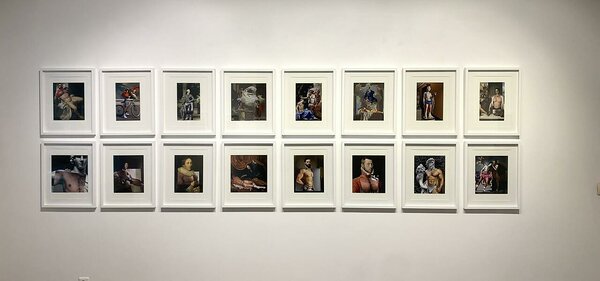
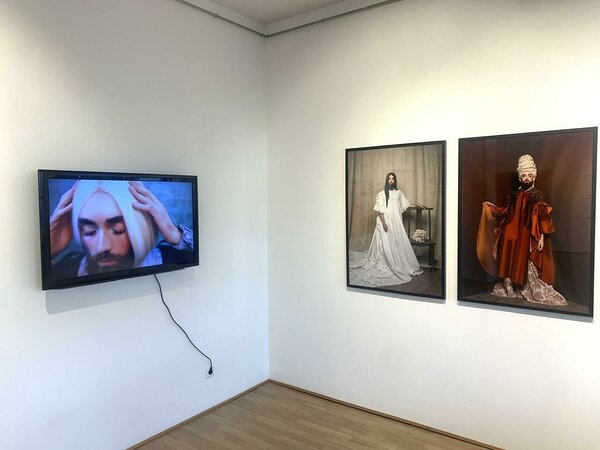
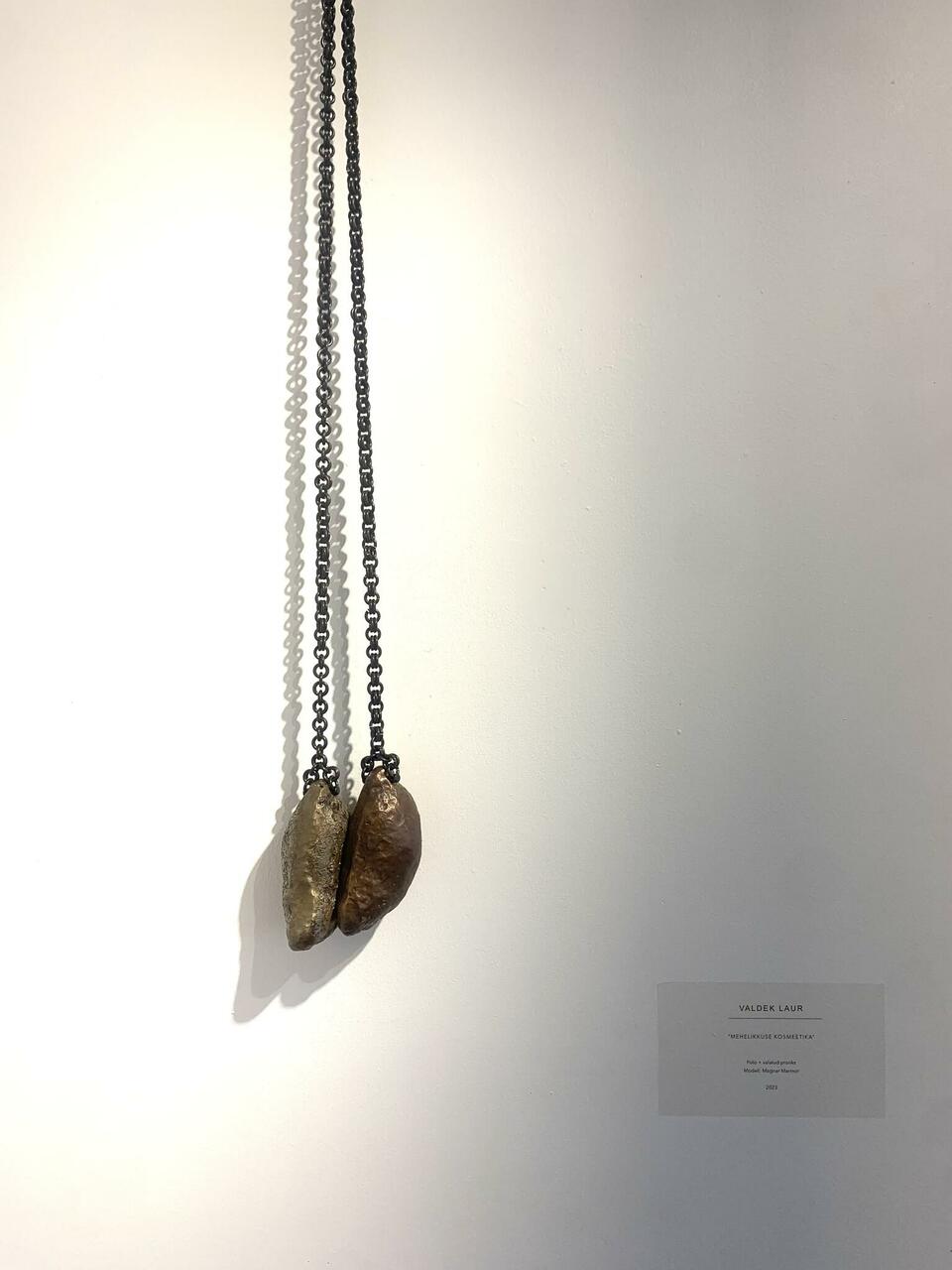
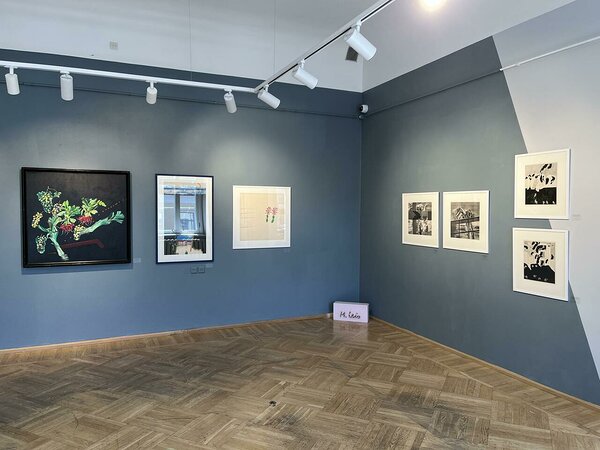
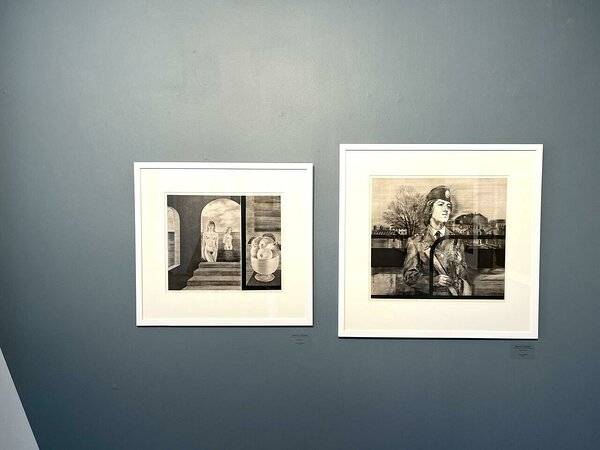
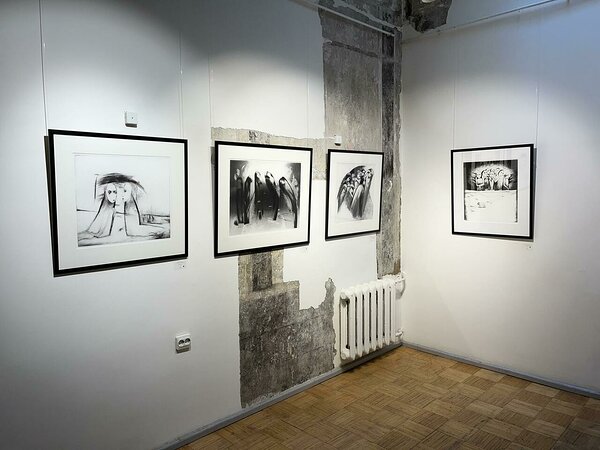

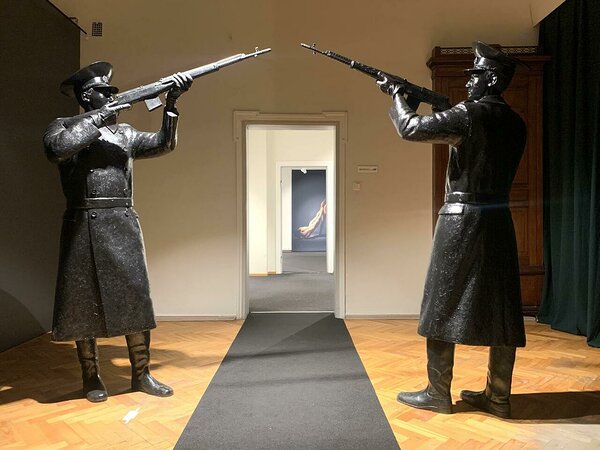
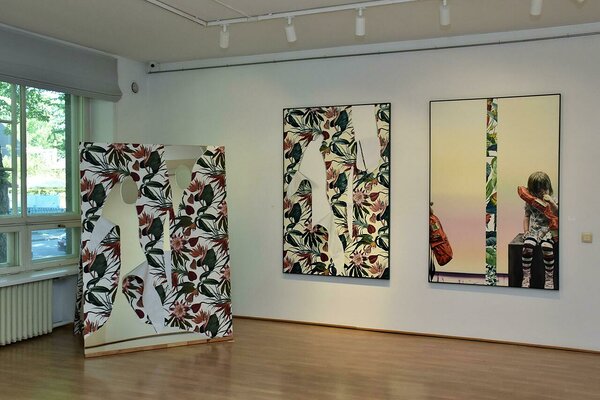
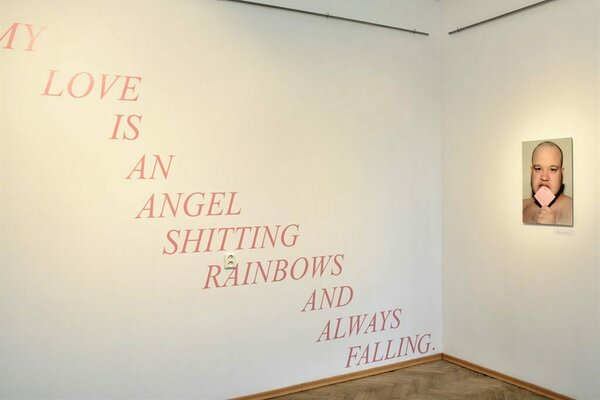

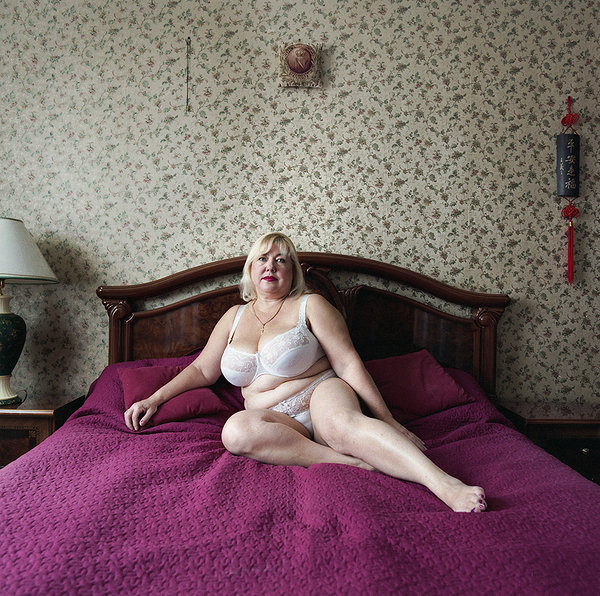


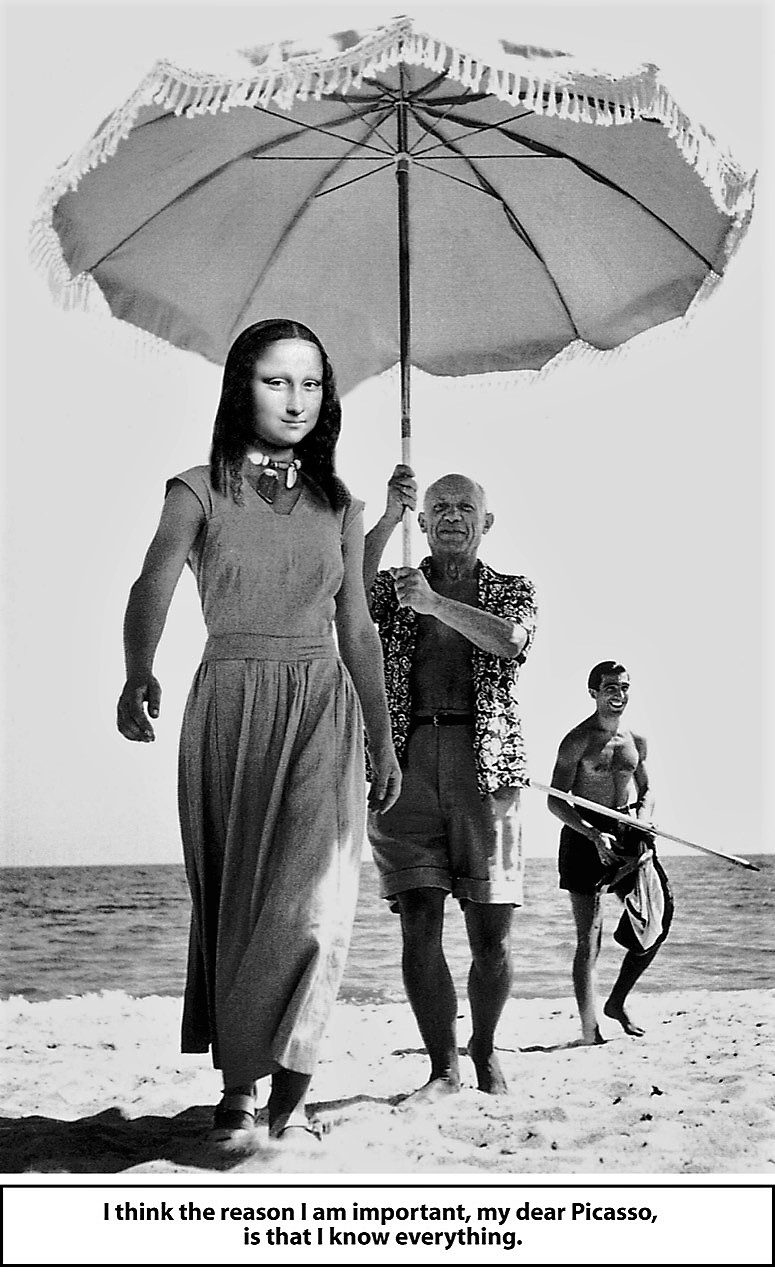
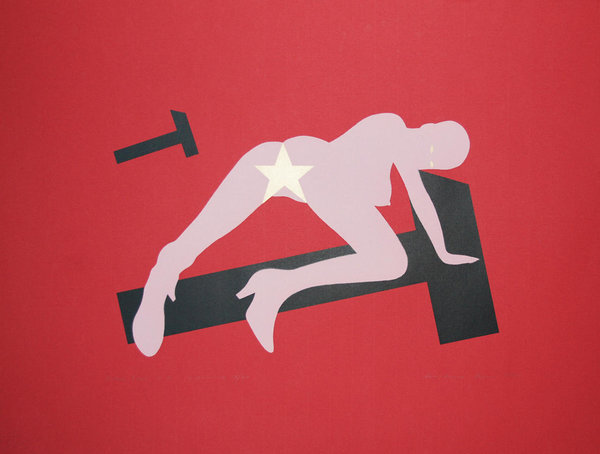
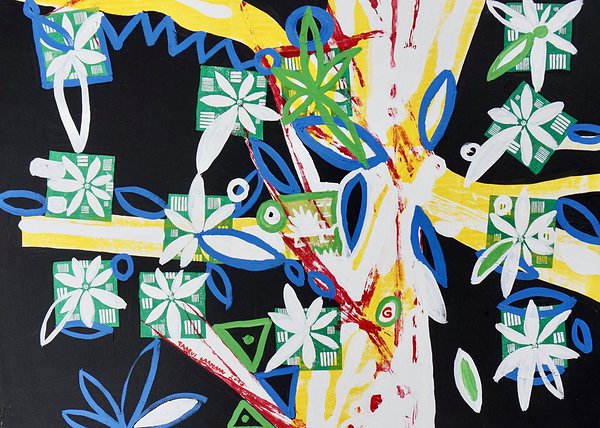

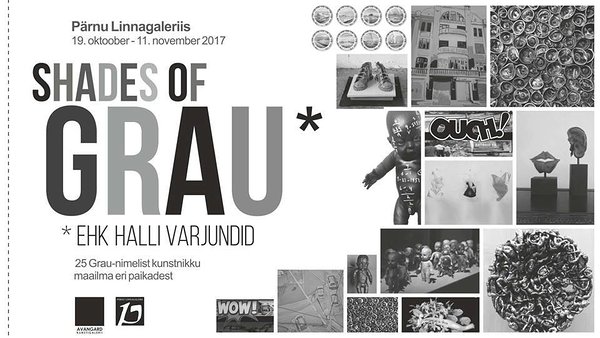
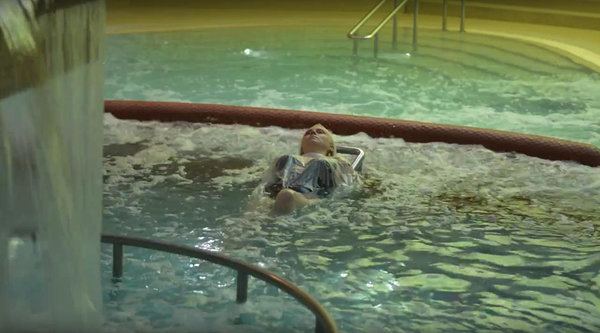
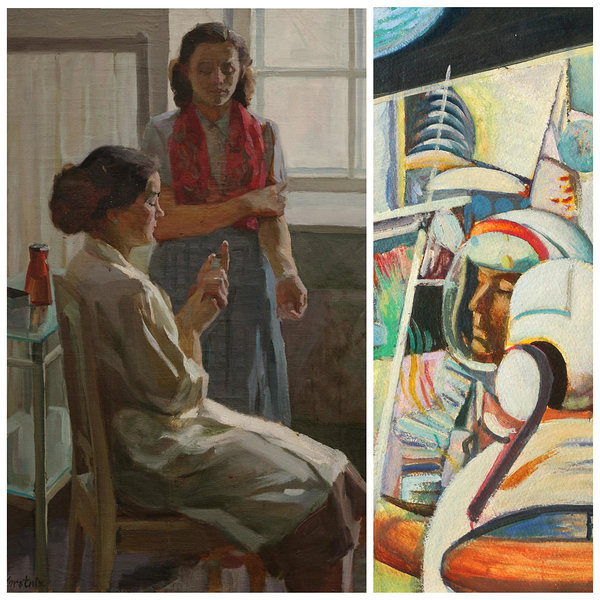
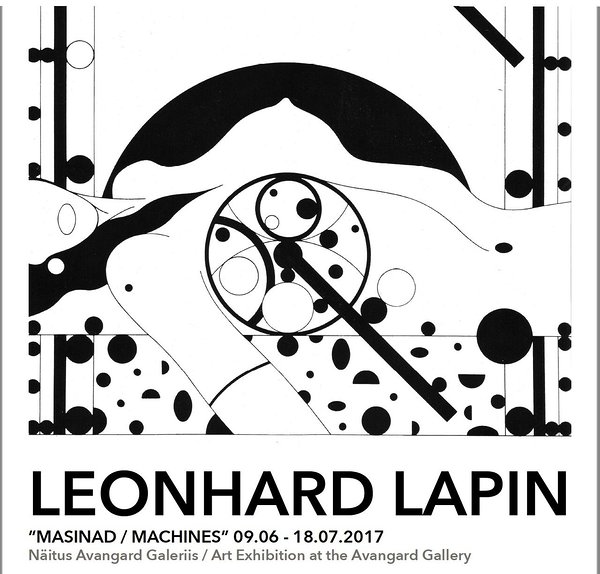
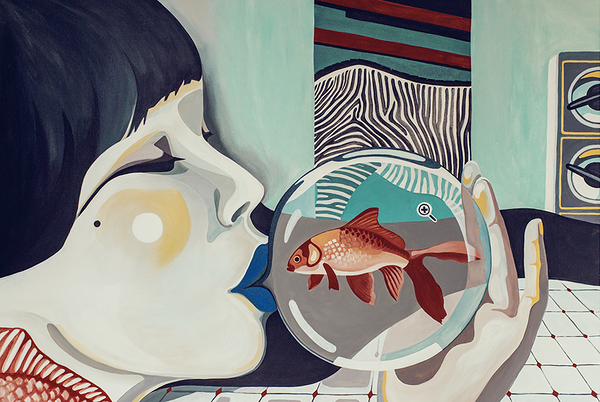
_block.JPG)
